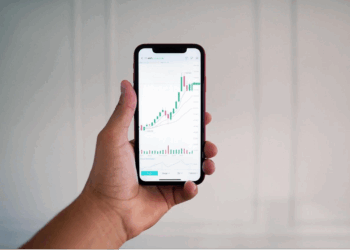Foreign remittance into Nigeria is estimated to hit $20.9 billion by the end of 2022, compared to $19.5 billion in remittances inflow recorded in 2021.
This represents a 7.5% rise from the prior year of 2021.
This is according to the World Bank’s November report titled “Remittances Brave Global Headwinds Special Focus: Climate Migration” published in November.
The report notes that remittance flows to Africa in 2021 registered a strong 16.4 per cent increase to reach $50 billion, exceeding expectations in the May 2022 Migration and Development Brief (World Bank/KNOMAD 2021a).
The report also noted that total remittance inflows were $596.9 billion in 2021 for low and medium-income earners and estimates $781 billion around the world.
What the data is saying: According to the World Bank, the increase in remittance inflow into Sub-Saharan Africa is due in large part to a resumption of stronger flows to Nigeria, reaching $19.5 billion on the growth of 13.2 per cent.
- According to the World Bank, high-frequency remittance data for 2022 for Kenya and Nigeria reveal remittances were expected to fall in 2022.
- Nigeria however, witnessed a sharp recovery in flows during 2021 (13.2 per cent), maintaining the improved momentum of 2021 into the first quarter of 2022.
- However, growth fell in Q2 data to 0.5% vis-à-vis the same period of 2021
- Nigeria’s remittance inflows have averaged $21 billion since 2014 with $24.3 billion and $17.2 billion is the highest and lowest recorded in 2018 and 2020 respectively.
Headwinds: The report noted that Nigeria was not gaining much from the surge in crude oil prices while Nigerians in the diaspora in the US, UK and Euro continue to face economic challenges to their income
- Nigeria is therefore expected to report a falloff in remittance flows to the growth of 7.5% for 2022.
- The report also notes that the largest recipients of remittances in Sub-Saharan Africa during 2022—measured in US dollar terms—including Nigeria, Ghana, Kenya, and Senegal.
- Nigeria is also included among the top 10 recipients of remittances globally.
Cost of remittances: Sub-Saharan Africa was named as the most expensive region to send money to.
- According to the World Bank, senders had to pay 7.8% to send $200 to African countries during Q2 2022.
- The average difference between the five most expensive and five least expensive corridors is astounding and significantly higher than in any other developing region.
- The average cost of remitting $200 from countries in the least expensive corridors amounted to 3.4 per cent in the second quarter of 2022.
- In contrast, costs for the most expensive corridors registered 25.2 per cent.
More Expensive within Africa: Intra-Africa transfer of forex remains an expensive venture. According to the report it cost about 35.% to transfer $200 from Tanzania to Uganda.
- “Though intraregional migrants in Africa comprise more than 70 per cent of all migration from or within the region, intraregional remittance costs are quite high due to the small quantities of formal flows and utilization of black market exchange rates. For example, sending $200 in remittances from Tanzania to neighbouring Uganda would have cost the migrant 35.2 per cent in the second quarter of 2022.”
What this means: Cross-border transfer remains a major form of foreign currency repatriation in Sub-Saharan Africa, especially Nigeria.
- However, it is still expensive to consumers and whilst opportunities remain for intra-Africa transfers.
- Some FinTechs have recognized this opportunity and are battling to disrupt strong monopolies that have dominated the market for years.
- They also face several regulatory challenges and more importantly capital controls that have created a foreign currency disparity, just like in Nigeria.




















